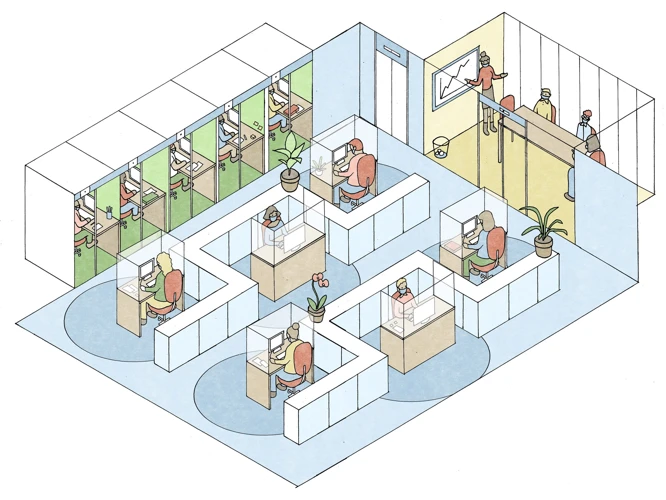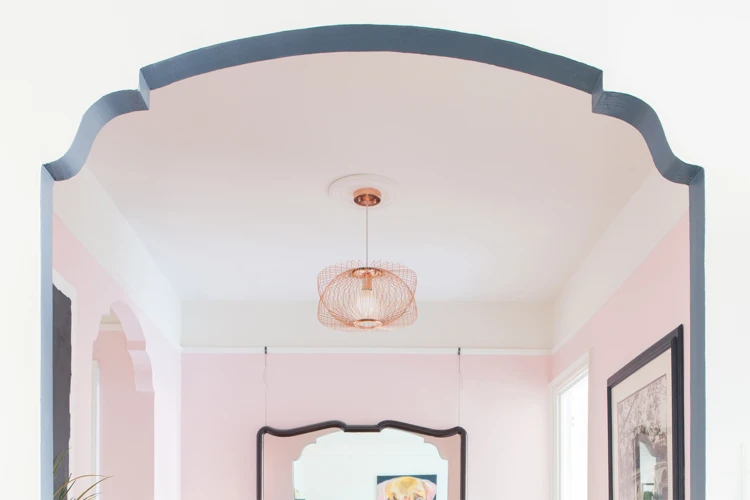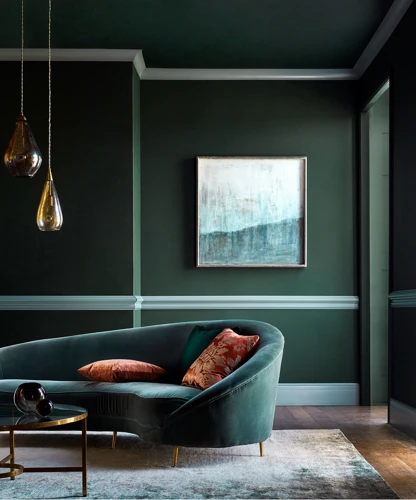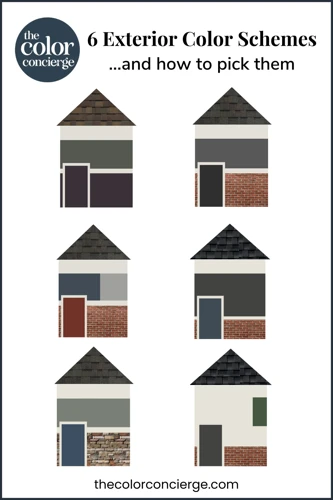Color is a powerful tool in the realm of architecture, serving as a silent language that communicates volumes about a structure’s style and character. Architectural color schemes are more than just a matter of aesthetics; they can influence mood, define form, and create a narrative for the building. In the delicate art of designing spaces, architects and designers often consult with an architectural color consultant to craft a palette that both enchants and complements the architecture.
Highlighting Exterior Architectural Elements with Color
The façade of a building is its most public face, and utilizing color wisely can accentuate its finest features. To highlight in architecture, color can be applied to exterior architectural elements, creating a visual hierarchy and guiding the observer’s gaze towards the structure’s unique aspects.
Choosing Colors for Exterior Architectural Details
Selecting the right hues for exterior architectural details is crucial for achieving the desired impact. When choosing colors, consider the historical context, the materiality of the building, and the surrounding environment. A well-chosen color can make details like cornices, moldings, and window frames stand out, enhancing the building’s overall presence.
How to Add Architectural Details to Home Exterior
For homeowners wondering how to add architectural details to home exterior, color is a transformative tool. You can introduce or emphasize elements such as shutters, trims, and doors with contrasting or complementary colors. This not only elevates the home’s curb appeal but also adds character and depth to the architectural design.
Enhancing Interior Spaces with Color Highlights
Within the interior, color can be strategically used to bring attention to architectural features. By painting a ceiling, a feature wall, or woodwork in a bold shade, you can create focal points that define spaces without the need for structural changes.
Architectural Color Consultant: Enhancing Your Home’s Interior
An architectural color consultant excels in using color to enhance a home’s interior. They have the expertise to advise on which shades can amplify the grandeur of a staircase or how to use light and dark tones to add depth to a room. Their guidance ensures that the color choices not only look good but also resonate with the inhabitants’ tastes and lifestyles.
How to Add Architectural Details to Home Interior
Considering how to add architectural details to home interior, color can be employed to mimic or highlight structural features. Painting techniques such as trompe-l’oeil can create the illusion of moldings or panels. For real architectural features, a contrasting color can make them pop against neutral walls, drawing the eye and adding interest.
The Importance of Contrast in Architectural Color Schemes
Contrast is a cornerstone of compelling architectural color schemes. It provides clarity and distinction between different elements of a building, allowing each to stand out while contributing to a cohesive whole. A well-executed contrast can guide the viewer’s attention and make certain features more prominent.
Integrating Harmony with Architectural Color Choices
While contrast is important, so too is harmony. A balanced color palette creates a sense of unity and flow throughout a space. This does not mean using the same color everywhere but rather choosing shades that complement each other and the design of the building. Harmony in color choices can make a space feel more comfortable and pleasing to the eye.
Creating Visual Interest with Color Patterns and Gradients
Patterns and gradients are dynamic tools for introducing visual interest through color. A subtle gradient can suggest movement and depth, while patterns can animate surfaces, making them more engaging. These techniques can be used on both exterior architectural details and within interior spaces to create unique and memorable experiences.
- Gradients can be used to soften the transition between colors.
- Patterns can break the monotony of monochromatic surfaces.
Symbolism and Expression through Color in Architecture
Color carries symbolic meaning and can be used to express the identity and purpose of a building. For example, green may be used to signify sustainability, while red might denote energy and passion. This symbolism can be subtly woven into architectural color schemes, allowing buildings to communicate beyond their physical form.
Experimental Approaches to Color in Architectural Design
Modern architecture often embraces experimental approaches to color, challenging traditional norms and encouraging a fresh perspective. These avant-garde choices can result in surprising and thought-provoking designs that stand out in the urban landscape. By pushing the boundaries of color application, architects and designers can create structures that are truly ahead of their time.
When designing the interior of your home, color plays a pivotal role in highlighting your architectural features. If you’re looking for inspiration, you may enjoy our articles on timeless interior design. Discover the power of classic color combinations for timeless interiors that can accentuate the unique aspects of your space. To add depth and character to a room, consider exploring our tips on accent walls in interior design. And if you’re thinking about integrating the latest trends without a complete overhaul, our guide on how to incorporate trending paint colors into your existing decor can help you achieve a fresh, modern look while paying homage to your home’s built-in charm.
Conclusion: The Impact of Color in Highlighting Architectural Features
Color is an essential element in the language of architecture, capable of transforming the mundane into the magnificent. When used intentionally, color can highlight architectural features, create engaging spaces, and convey deeper meanings. Whether through bold contrasts, harmonious blends, or innovative applications, color shapes our experience of the built environment, leaving a lasting impression on all who encounter it.



